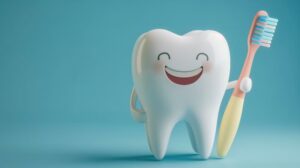Table of Contents
Toggle
Before you proceed with a direct-to-consumer orthodontic company, the American Association of Orthodontists present a number of factors and questions you may want to consider. One such factor is that direct-to-consumer orthodontic companies lack one-on-one, in-person evaluation or professional supervision throughout treatment. In-person evaluations and supervision throughout treatment is very important because it ensures you a functional bite and an aesthetically pleasing smile
Consider this question: What other transforming medical treatment would you undergo without an in –person, pre-treatment evaluation or ongoing in-person supervision from a medical professional?
Regardless of where you are researching orthodontic treatment, here are a few questions you may want to consider:
As part of your treatment, are comprehensive diagnostic records like x-rays taken before treatment?
If the answer is YES, then ask:
- Does the treatment and fee include x-rays of your teeth and jaw?
- Does treatment and fee include a clinical examination of your jaw alignment, teeth, bite and the relationship of your teeth to the skeletal structures?
- Does the treatment and fee include taking photographs of your face, facial profile, mouth and teeth?
- Does the treatment and fee include taking digital scans or other impressions of your teeth?
If the answer is NO, then ask
- Are you comfortable starting orthodontic treatment without comprehensive diagnostic records?
- As part of your treatment fee, do you receive any in-person visits to a dentist’s or orthodontist’s office during your treatment?
If the answer is YES, then ask:
- How many?
- What occurs during these in-person visits?
- Is there a licensed dentist or orthodontist in the office to supervise the visits?
If the answer is NO, then ask:
- Are you comfortable with orthodontic treatment that does not involve any in-person visits with a dentist or orthodontist?
Is only one treatment type offered (such as invisible aligners or a certain appliance)?
If the answer is YES, then ask:
- How do you know that is the best treatment option for you, given your unique situation and oral condition, compared to other treatment models (such as braces)?
If the answer is NO, then ask:
- How is the decision being made for the best treatment model for you, and who is making that decision?
Who is responsible for detecting any issues that may occur during orthodontic treatment?
- Is it you?
- If it is a doctor not associated with your treatment, who pays for those check-ups?
How do you know if your teeth and gums are healthy enough for orthodontic treatment?
- Who is making that decision and how is it being determined?
- If the decision maker is a dentist or orthodontist not associated with your treatment, who pays for that assessment?




